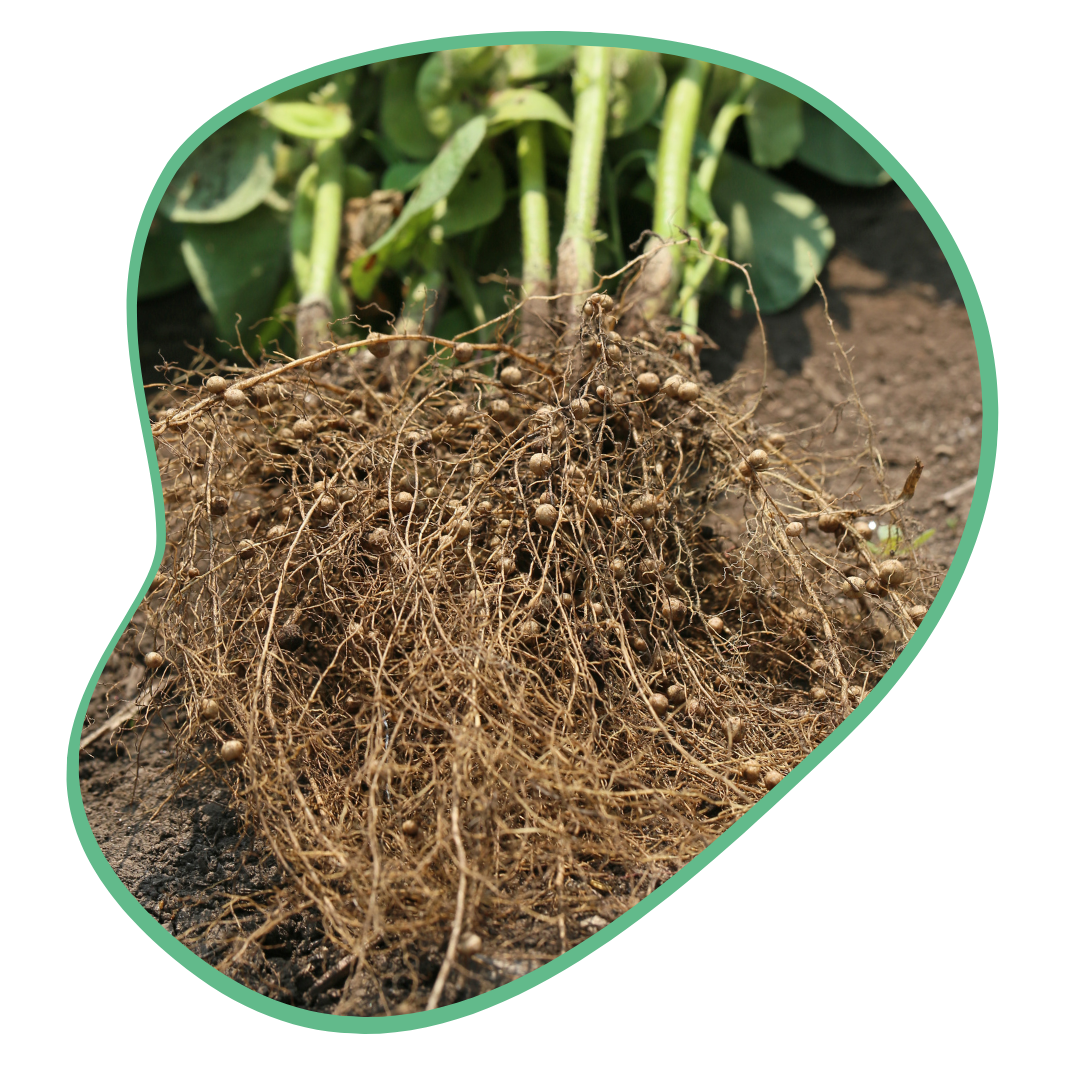Soil degradation and erosion is an immense challenge, with about 33% of world soils moderately to highly degraded.

The Food and Agriculture Organization of the United Nations defines soil degradation as a change in soil health status resulting in a diminished capacity of the ecosystem to provide goods and services for its beneficiaries. Soil degradation can be biological, including loss of soil organic matter and biodiversity; chemical, including pollution, overapplication of fertilisers and salinization; or physical, including wind and water erosion.
Forty percent of these degraded soils are located in Africa and most of the rest are in areas significantly affected by poverty and food insecurity. The decline in soil health has had implications on agricultural productivity, food security, and environmental sustainability across the continent. In Sub-Saharan Africa, 82% of those living in extreme poverty live in rural areas, and 76% of working adults in extreme poverty are employed in agriculture). As a result, economic growth and well-being in the continent, particularly for the rural population who derive their livelihoods directly from agriculture, has been hampered. Therefore, restoring soil health is an essential element of climate change mitigation and resilience.
These and other challenges have led the African Union (AU) to organise the Africa Fertiliser and Soil Health Summit, from 7-9 May 2024, to review the state of Africa’s soil health. The AU recognizes that fertiliser is crucial for achieving an African Green Revolution in the face of rapidly rising population and declining soil fertility. The two most important nitrogen sources in agriculture are applied fertilisers and nitrogen fixation by legumes. However, overapplication of synthetic fertilisers contribute to soil degradation and climate change, and most farmers in Africa are poor, having virtually no access to fertiliser.
Beans Fix Nitrogen

To support Africa’s farmers and build the healthy soils of our future, it is necessary to draw upon the agricultural practices of the past. Traditionally, before the advent of synthetic nitrogen fertilisers, as much as 50% of all available nitrogen in some farming systems may have originated from symbiotic nitrogen fixation by legumes.
Beans are legumes, which are any plants from the Fabaceae family that have the unique ability to fix atmospheric nitrogen through their symbiotic relationship with nitrogen-fixing bacteria called rhizobia. The bacteria capture, or “fix” atmospheric nitrogen gas, convert it to ammonia and make it available to the plant. The plant reciprocates by providing organic compounds to sustain the bacterial colony in the plant’s root nodules. Note that pulses are the edible seeds from legume plants which include dry beans, dry broad beans, dry peas, chickpeas, cow peas, pigeon peas, lentils, bambara beans, vetches, lupins and pulses NES (not elsewhere specified) – minor pulses that don’t fall into one of the other categories.
A re-integration of more legumes like beans can minimise fertiliser needs, due to their ability to fix soil nitrogen. This can help reduce negative environmental impacts associated with overreliance on and overapplication of fertilisers such as nitrogen runoff, erosion by wind or water, leaching, and gaseous emissions, contributing to problems such as reduced water quality, loss of biodiversity through eutrophication, and climate change.
Beans in Crop Rotation

Beans play an important role in crop rotation. Cropping with legumes can increase soil organic carbon content through functions such as supplying biomass as well as improving carbon management, thereby helping enhance carbon sequestration in deeper soils. Due to their nitrogen-fixing ability, legumes can store 30% higher soil organic carbon compared to other species. The specific carbon sequestration potential varies with legume species, climate, root morphology, and other factors.
Diverse crop rotations benefit crop health and reduce production risk compared to monoculture. In addition to helping minimise the need for nitrogen fertiliser application on subsequent crops, legumes help improve soil structure and health. When cereal grains are planted after a legume crop, the nitrogen use efficiency (i.e., the plant’s ability to use nitrogen to produce biomass), productivity, and protein content of the cereals are higher.
Through growing diverse crop species, pathogens that can only survive with certain crop hosts cannot survive.
One classic example is the ‘three sisters’, which have played an important role in the Americas for hundreds of years. In this system, beans, maize, and squash are planted together as a polyculture, and the yield is greater on a land-equivalent basis than monocultures. It is speculated that the three species have different and possibly complementary nutrient foraging strategies, thereby increasing total exploration of the soil by the plants’ roots. Bean plants support the maize and squash by fixing nitrogen.
The second example is from Africa where many smallholder farmers practise a different polyculture, intercropping beans and maize. Beans are known to do well when they are rotated with crops such as maize, wheat, rice, sunflower, and more.
Beans Support Farmer Prosperity
Professor Jacqueline McGlade of Downforce Technologies, a member of Beans is How Coalition, says that “Outside the farming sector, people do not understand how important soils are to the climate.” Through her organisation’s research, it is estimated that it would cost about $1M USD to restore 40,000 hectares (99,000 acres) of what is currently badly degraded farmland in Kenya, an area that is home to about 300,000 people. Says Jacqueline, “Changing farming could make soils carbon negative, making them absorb carbon, and reducing the cost of farming,” (excerpts from The Guardian).
While nitrogen fertilisers provide an immediately available nitrogen source and can help maximise productivity and therefore farmer profits, production of synthetic fertilisers results in greenhouse gas emissions. Human nitrous oxide emissions is a potent greenhouse gas, and the majority of these emissions are derived from nitrogen fertiliser application.
Beans fix nitrogen in fields where fertilisers may not be as readily available and help farmers save on fertiliser costs, which have been rising. A recent study by Gu and fellow researchers indicates that the economic benefits of including legumes in agricultural systems, shows that the amount of nitrogen fixed annually by legume-rhizobia symbioses saves US $8-12 billion. Including legumes in crop rotation systems can therefore increase overall crop profitability while also reducing production costs.
Call to Action:
During the Africa Fertiliser and Soil Health Summit, we call upon African Leaders especially Ministers of Agriculture and Environment to invest in beans by:
-
Rolling out awareness campaigns for communities to learn about the benefit of beans for health and nutrition while fighting busting bean myths
-
Supporting programming to incorporate beans into public procurement, especially schools and for at risk populations
-
Creating beneficial policies to support farmers – especially smallholders, women, and youth — including seed sharing, capacity building and training, favourable subsidies, and connection to market opportunities.
-
Financing bean research and innovation efforts, including bean breeding and adaptation and mitigation effects of climate change
-
Enabling robust and timely data collection and sharing on bean consumption and production
From their nitrogen-fixing prowess to soil structure improvement and beyond, beans prove to be indispensable allies in the quest for sustainable agriculture. As we celebrate their myriad benefits, let us continue to sow the seeds of stewardship and work together to regenerate the precious soil for generations to come.

This article contains references compiled from “The Brilliance of Beans: A Comprehensive Review”, written for Beans is How by Dr. Chelsea Didinger of A Legume A Day.






 But it’s real. It’s replicable. And
But it’s real. It’s replicable. And 


 #SouthAsia We want to highlight ...
#SouthAsia We want to highlight ... and swipe for some delicious South Asian #recipes that
and swipe for some delicious South Asian #recipes that 






 We’re thrilled to see the support for our...
We’re thrilled to see the support for our...
 #Beansishow
#Beansishow





